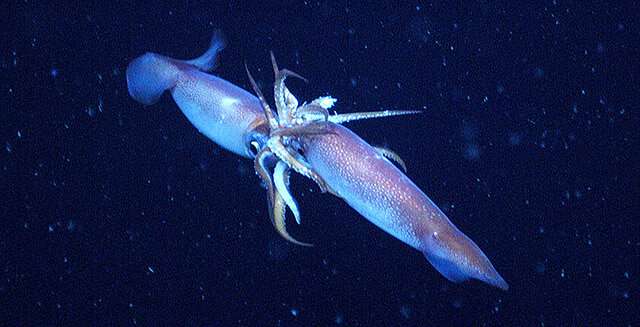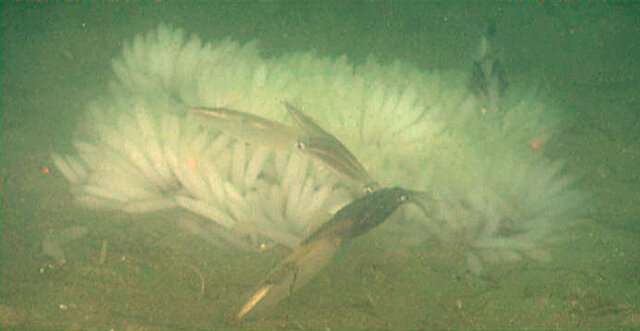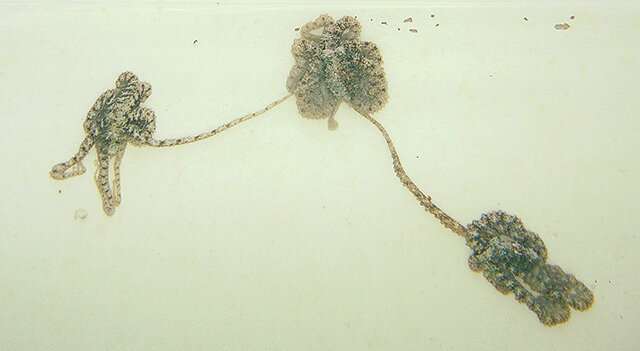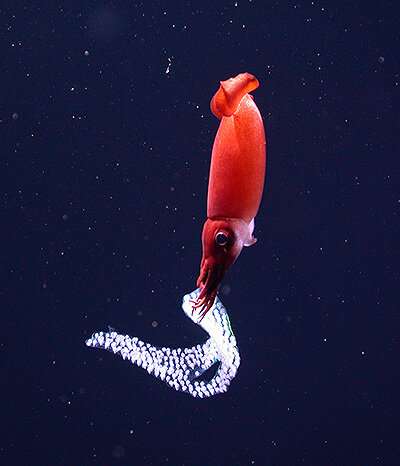16 things you probably didn't know about cephalopod sex

If you've ever seen the Monterey Bay Aquarium's "Tentacles" exhibit, you know that cephalopods (squids, octopuses, and their kin) are awesome creatures. They can change the texture and color of their skin in the blink of an eye and "taste" things using suckers on their arms. They also have developed a variety of complex social and survival behaviors.
Given all this, it should come as no surprise that cephalopods' sex lives are diverse and quirky. In a recent paper in Frontiers in Physiology Peter Morse from James Cook University and MBARI biologist Crissy Huffard summarize the variety of sexual and reproductive behaviors in cephalopods and discuss how these behaviors may help the animals survive.
In general, shallow-water cephalopods typically grow fast, live for only a year or two, and die soon after spawning. Deep-water cephalopods are more likely to spawn multiple times and live for at least several years. This may help them cope with limited food and the challenges of finding mates.
Here are a few of the surprising observations about cephalopod sex that Morse and Huffard describe in their article:
- When groups of cephalopods get together to mate, males typically outnumber females, with up to 11 males for each female.
- Among cephalopods that mate in groups (including many squids, cuttlefish, and at least one type of octopus), large males guard individual females and chase away competing males. Smaller males often sneak in to copulate with guarded females by camouflaging themselves or hiding behind rocks. Sneaker males can even mimic females to get past the guarding male.
- Some male cephalopods can't tell the difference between males and females, at least from a distance, even among members of their own species. Thus males occasionally attempt to mate with other males.
- Female cephalopods often mate with numerous males, and then store the sperm until they spawn. In most octopus species, females can even mate with two males at the same time.
- Octopuses are generally solitary creatures. When they do interact, it usually involves disputes over mates, "opportunistic" copulation, and/or cannibalism.
- Octopuses have thousands of chemoreceptors on their suckers, which they may use to touch and taste each other prior to copulating. This sounds romantic until you consider that many octopuses are cannibalistic.
- Males and females of some octopus species occupy dens near one another on the seafloor. This allows them to copulate repeatedly with their neighbors. Some of these octopuses don't even need to leave their dens to mate. Males set up dens close to females and use their long mating arm to deliver sperm packets to the female. This may help the males avoid being attacked or even eaten.
- In at least three species of octopus, females sometimes approach males to initiate mating.
- After laying their eggs on a rock or in strings that they brood in their arms, female octopuses guard the eggs and keep them clean until they hatch. At least one deep-sea octopus was observed guarding her eggs for more than four years—longer than any other animal.
- Some male deep-sea squids may perform "drive-by mating," slapping sperm packets on any other squid of their species (male or female) that they come across, then jetting away. This strategy may help the males survive mating encounters with larger and potentially cannibalistic females.
- Female southern bobtail squid sometimes eat the sperm packets of males they have mated with. This may provide the females with nutrition that helps them bear more young.
- Some deep-sea squids store and brood hundreds of thousands of fertilized eggs in specialized egg sacs, guarding their young and protecting them from parasites for up to nine months until they hatch.
- In at least one group of cuttlefish, the females reject almost three quarters of the males that try to mate with them. As the authors put it, "female choice plays an important role in the differential reproductive success of male cuttlefish. However, it is still not certain what criteria females might use to discern between potential mates."
- Pairs of nautiluses may have sex for up to 30 hours at a time. During copulation, males often bite females on the mantle, leaving marks on the female's shell.
- Some male nautiluses attempt to mate with any object that has a similar shape and size as an adult nautilus, including other male nautiluses.
- No one knows how vampire squids mate, but they apparently produce just one egg at a time, which they release to drift at the mercy of the ocean currents.
-

Doryteuthis opalescens squids mate in large swarms, with females laying their eggs on in masses on the sandy seafloor. Credit: MBARI -

A female Abdopus aculeatus octopus mates with two males in a laboratory setting. Credit: Crissy Huffard -

A Bathyteuthis berryi squid carries its eggs in the darkness of the deep sea. Credit: MBARI
More information: Peter Morse et al. Tactical Tentacles: New Insights on the Processes of Sexual Selection Among the Cephalopoda, Frontiers in Physiology (2019). DOI: 10.3389/fphys.2019.01035
Provided by Monterey Bay Aquarium Research Institute




















